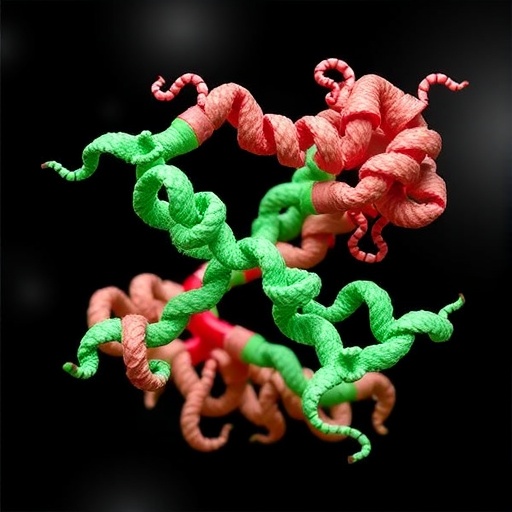In a groundbreaking study published in Nature, a team of researchers has unveiled new insights into the evolution and structural intricacies of the ATP-driven methyl-coenzyme M reductase (MCR) activation complex, shedding light on the enigmatic iron-sulfur clusters fundamental to archaic enzymatic systems. This discovery challenges pre-existing notions about the origin and diversification of [8Fe-9S-C] clusters, previously thought to be unique to the nitrogenase (Nif) family, and posits a far earlier and more widespread evolutionary presence rooted in methanogenic archaea.
Methyl-coenzyme M reductase is a crucial enzyme in the metabolic process of methanogenesis, catalyzing the production of methane in archaea. The enzyme’s activation has long been a biological conundrum, involving complex cofactors with iron-sulfur clusters whose origins had remained elusive. The newly published work meticulously reconstructs the evolutionary history of these clusters, demonstrating their presence first in MCR systems before being co-opted in nitrogenase enzymes responsible for nitrogen fixation.
Central to this narrative are the extraordinary [8Fe-9S-C] clusters, iron-sulfur-carbon complexes whose structural complexity underpins the catalytic capabilities of nitrogenases and related reductases. Prior to this study, such clusters were exclusively identified within the Nif family, essential for biological nitrogen fixation. Unexpectedly, the researchers identified potential [8Fe-9S-C] clusters within the MCR activation complex, suggesting an evolutionary precedence in methane-metabolizing archaea rather than in nitrogen-fixing bacteria.
To embark on tracing the phylogenetic roots of these clusters, the investigators employed advanced phylogenomic techniques focusing on the proteins McrC and Mmp7, both of which harbor binding sites for [8Fe-9S-C] clusters. These proteins were found widely across Euryarchaeota, the TACK superphylum (comprising Thaumarchaeota, Aigarchaeota, Crenarchaeota, and Korarchaeota), and the newly characterized Asgard archaea, groups that collectively represent some of the most ancient and deeply branching lineages in the archaeal domain.
The phylogenetic reconstructions aligned broadly with established archaeal trees, reinforcing the idea that these clusters were present in the last common ancestor of these archaeal groups. This revelation further strengthens earlier hypotheses regarding the antiquity of MCR itself, previously believed to be a hallmark of methanogenic archaea. The current research thus provides molecular evolutionary evidence supporting this deep-rooted distribution.
Further widening the scope, the study delved into the evolutionary trajectory of NifB, a vital enzyme responsible for synthesizing the [8Fe-9S-C] clusters in nitrogenases. NifB is remarkable not only for its role in nitrogenase assembly but also for its indispensability in methanogens lacking nitrogenase genes, suggesting a broader functionality in iron-sulfur cluster biogenesis, possibly linked to MCR activation. Phylogenetic trees for NifB were complex to resolve due to gene duplications and horizontal gene transfer events, yet the broad presence of this enzyme across major archaeal groups mirrors the distribution observed for MCR-related proteins.
Adding another layer to the evolutionary puzzle, the researchers analyzed the origin of CfbD, a distant homolog within the Nif family associated with coenzyme F430 biosynthesis but devoid of [8Fe-9S-C] clusters. The phylogeny of CfbD closely resembled that of McrC and Mmp7, tracing back to the last common ancestor of the TACK, Asgard, and Euryarchaeota lineages. Given that CfbD likely represents the oldest branch within the Nif family, the data suggest that subsequent gene and operon duplications gave rise to the diverse nitrogenase enzymes observed today.
Critically, when focusing on the broader Nif family members implicated either in harboring or maturing [8Fe-9S-C] clusters, the team uncovered a pattern indicating that the group’s root lies within Euryarchaeota. TACK and Asgard sequences, where present, appeared to be sporadic and attributable to horizontal gene transfers from Euryarchaeota, providing yet more evidence against a common ancestral presence of these clusters at the base of these lineages.
Taken together, these phylogenetic findings compellingly argue for the initial adaptation and use of the [8Fe-9S-C] cluster in the context of MCR activation. It seems only later that the nitrogenase systems acquired this sophisticated clustering architecture, reflecting a fascinating evolutionary repurposing of complex metalloclusters across distinct biological pathways.
This discovery not only redraws the evolutionary map for enzymatic cofactors but also invites new perspectives on how early archaea managed electron transfer and catalysis in extreme environments, vital for energy metabolism. Understanding the primacy of these clusters in MCR systems enriches our grasp of ancient bioenergetics and the molecular evolution underpinning life’s diversification on Earth.
Moreover, these insights bear significant implications for synthetic biology and bioengineering, where harnessing or mimicking ancient metalloenzymes could revolutionize biotechnological approaches to sustainable methane production or nitrogen fixation. By elucidating the foundational architectures of such cofactors, this research paves the way for designing robust biomimetic catalysts tailored for energy and environmental applications.
The interdisciplinary techniques employed ranged from high-resolution structural biology to computational phylogenetics, underscoring the power of integrating multi-omic data to unravel deep evolutionary mysteries. The authors’ work exemplifies how modern biology can re-examine and reinterpret enzymatic function and lineage through the prism of molecular evolution.
Importantly, this study also addresses long-standing debates regarding horizontal gene transfer and protein evolution in archaea, clarifying that, despite some gene flow events, the key components for MCR activation and Nif cluster synthesis likely emerged independently and very early in archaeal history.
In conclusion, the identification of [8Fe-9S-C] clusters as ancient features of the methyl-coenzyme M reductase activation complex redefines our understanding of metallocluster utilization and evolutionary innovation. This not only enhances knowledge of the molecular underpinnings of methanogenesis but also informs broader discussions on the origins and diversification of life’s metalloprotein machinery.
Subject of Research: Evolution and structural characterization of [8Fe-9S-C] clusters in methyl-coenzyme M reductase activation and nitrogenase systems.
Article Title: Structure of the ATP-driven methyl-coenzyme M reductase activation complex.
Article References:
Ramírez-Amador, F., Paul, S., Kumar, A. et al. Structure of the ATP-driven methyl-coenzyme M reductase activation complex. Nature (2025). https://doi.org/10.1038/s41586-025-08890-7
Image Credits: AI Generated




